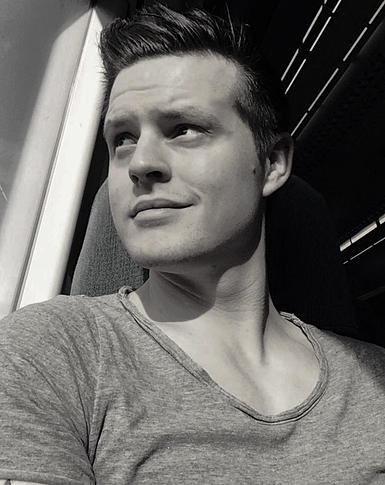
Ben Galley is a young author from sunny England.
Ben has been writing since he was old enough to be trusted with a pencil,
which, and if you know Ben personally you'll know why, was somewhere in
his early teens. Now of course, he's much more responsible, and has moved
from the pencil to the self-publishing world. He is the author of the epic
fantasy trilogy - The Emaneska Series, as well as a
comprehensive self-publishing guide Shelf Help. He has released four books
to date, and doesn’t intend to stop writing any time soon.
As a proud indie author, Ben does everything by himself. He
writes, edits, sketches the maps, manages tours, does the marketing... even
this website was crafted by his very hands. Ben is a frequent guest speaker and
lecturer on the subject of self-publishing, and is incredibly zealous about
helping other authors and writers. He currently offers 1:1 sessions to other
indie authors at his site Shelf Help, and is also a Guardian Masterclass
tutor.
Ben is also the co-founder and director of indie-only eBook
store Libiro. Libiro.com is a store exclusively for indie
authors and self-published books. You can find it at www.libiro.com.
Aside from writing and lecturing, Ben dabbles in music,
surfing, climbing, scuba-diving, rat-keeping, and apparently owns an acre of
the moon. Ben can be found being loquacious and attempting to be witty on
Twitter @BenGalley, or on Facebook /BenGalleyAuthor.
Ben dropped by to have a chat about his latest book, Bloodrush
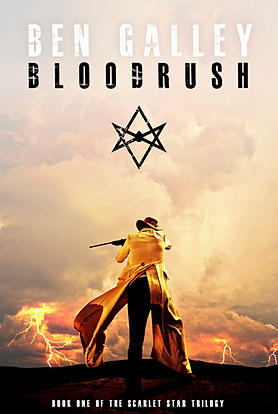
Bloodrush is your
fifth fiction book, can you tell us a bit about it, how does it differ to the
Emaneska Series?
Bloodrush is a blend
of western, dark fantasy and alternate history, set in a twisted and version of
Wyoming in 1867, on the frontier of the known world. It follows the story of a
high-born and recently orphaned young Merion Hark, who is sent to the brink of
civilisation to live with his undertaker aunt. All he wants to do is get home
to London and his grand halls, but all the wild west seems to want to do is eat
him, kill him, or cheat him out of his father’s empire. Fortunately, he has a
few friends to stand by his side, namely a faerie outcast named Rhin Rehn’ar,
and something strange running in his blood…
The main difference
between the Scarlet Star Trilogy and the Emaneska Series is that it’s far, far
away from the Nordic, pseudo-medieval world of Emaneska. In Bloodrush it’s hot,
dusty, packed with railroad and guns, and the clattering industry of a more
modern world.
You’ve also just
brought out a Graphic Novel – how did you find writing for an artist to bring
the words to life?
I have indeed, and I
really couldn't be prouder of it. The art my artist Mike Shipley has produced
is stunning, and I think it’s done The Written (Book 1 of the Emaneska Series)
serious justice.
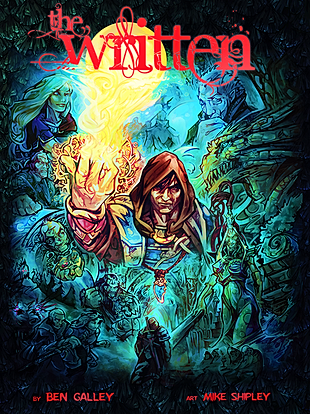
The hardest challenge
was trimming the words down into short descriptions and bubbles. We had to take
460 pages and cram them into 120. Mike did a lot of work manhandling scenes so
they could tell several pages of story with one picture. I then came in to
rewrite the most important snippets he’d taken from the book, to make them flow
and reflect the book’s prose. It was tough, and it took us 2 years, but like I
said I couldn't be happier.
And you have a new
book coming soon for which people can get a sneak peak here (http://www.bengalley.com/#!Bloodmoon-Sneak-Peek-Spoilers/c1qbb/54d2904a0cf27bee9f0250cf)
Can you whet our appetite for that one?
Absolutely! Bloodmoon
is the sequel to Bloodrush and the second book in the Scarlet Star Trilogy. It
follows straight on from the epic finale of Bloodrush, and follows Merion and
his dysfunctional crew as they trek east towards the coast, and a ship home. Merion’s
growing up with every step, but so are the stakes.
You are a bit of a
self-publishing guru and help other authors self-publish, what are the top 5
reasons to be an Indie author?
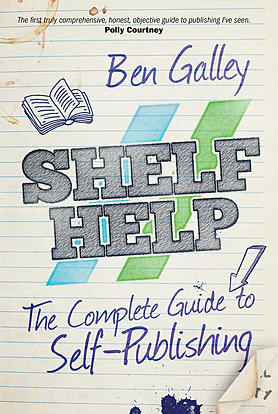
Firstly, control. You
act as the project manager for your publishing project, overseeing every aspect
such as cover design, editing, formatting, and of course, how the book is
published.
Secondly, royalties.
For indie authors, these are usually a lot higher than they are for
traditionally-published authors, ranging up to 70% for eBooks.
Thirdly, you get to be
as creative as you want. As you’re a one-man or one-woman band, you act like
your own small business, and with no external influence, you can essentially
write what you want, and dare to experiment, something larger houses can’t do.
Fourthly, you get to
be closer to the reader. Readers are now the market forces that decide whether
your book is a success or not. Thanks to technology and self-publishing, readers
can be integrated into the writing process, beta-reading and reviewing. This
feedback loop allows indies to write smarter, and connect with their audience.
Lastly, because it’s
actually viable. With the ability to publish with relative ease and inexpensively,
it’s now possible to make a living by going indie, as long as you publish to a
high professional standard and you publish great books. Those are the two keys.
You run a store for
Indie books (http://www.libiro.com/)
– tell us how that came about?
I wanted to experiment
with the idea of giving indie authors a dedicated space to sell from. Authors
can get lost and drowned out at the major stores, mainly due to size and
traditional competition. At Libiro, it’s only indies allowed, so you get a
different dynamic. I run the store with a good friend and tech-master Teague
Fullick, and we’re just working on our 3rd store design, coming later this
year!

Do you also write
short stories? If so where can people find them, if not, why not?
Shorter form fiction
is something I’ve been experimenting with over the last few months, and I will
be publishing some short stories later in the year. I’ll be surrounding the
Scarlet Star Trilogy with backstories and little glimpses at the rest of the
world.
What’s the one
question you never get asked in interviews that you really want to answer?
If I had one
superpower? The ability to stare at a screen and have a book unreel itself from
my mind in minutes. I’m highly suspicious that Brandon Sanderson has already
achieved this…
Which bit of your
writing are you most proud of?
I think every book I
write raises my own bar, so at the moment, I’m most proud of Bloodrush. That’s
likely to change as soon as I finish and release Bloodmoon however!
Specifically, I have to say the section with the railwraith in Bloodrush is
currently my favourite of any in the book. It was so much fun to write.
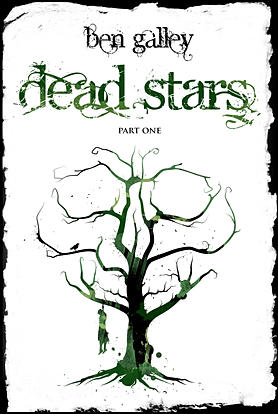
What did you learn
about writing by writing Bloodrush?
Bloodrush taught me a
lot about pacing, and how to build a rich environment and world history without
boring the reader to death trying to explain it and set the scene. I reveal it
gradually, layer by layer, and that’s something I’ll be carrying over to
Bloodmoon.
In one sentence what’s
your best piece of advice for new writers?
Professionalism is
paramount: in design, in prose, and in publishing.
Many thanks to Ben for answering our questions - head on over to his website to check out his books...
No comments:
Post a Comment